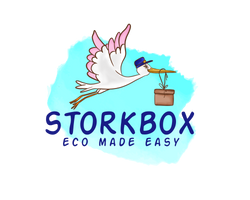The Problem with Conventional Nappy Disposal
Traditional nappy disposal methods often involve the use of plastic bags, which, as we know, pose significant environmental challenges. Plastic pollution is a pressing issue globally, and as responsible parents, it's essential for us to seek alternatives that are kinder to the planet.
People use nappy sacks, also known as nappy disposal bags, for several reasons:
-
Odour Control: Nappy sacks are designed to contain and mask the smell of used nappies, helping to keep the surrounding area fresh and odour-free.
-
Hygiene: They provide a sanitary way to dispose of soiled nappies, reducing the risk of spreading germs and bacteria.
-
Convenience: Nappy sacks are small, portable, and easy to use. They are particularly handy for disposing of nappies when away from home, such as during travel or outings.
-
Containment: The bags help to contain the mess associated with used nappies, preventing leaks and spills until the nappy can be properly disposed of in a trash bin.
Enter Eco-friendly Nappy Sacks:
Nappy sacks, also known as nappy disposal bags, are specifically designed to contain and seal in soiled nappies, preventing odours and minimising mess. But not all nappy sacks are created equal. Opting for eco-friendly options can make a world of difference.
Benefits of Eco-Friendly Nappy Sacks:
-
Biodegradability: Many eco-friendly nappy sacks are made from biodegradable materials, such as plant-based plastics or compostable materials. This means that after use, they break down naturally, reducing the burden on landfills and marine environments.
-
Reduced Plastic Usage: By choosing nappy sacks made from alternative materials, you're reducing the demand for traditional plastic bags, thus contributing to the fight against plastic pollution.
-
Odour Control: Just like conventional nappy sacks, eco-friendly options excel at containing odours, ensuring a fresh and pleasant environment during nappy changes.
-
Convenience: Eco-friendly nappy sacks offer the same convenience as their conventional counterparts. They're compact, easy to use, and perfect for on-the-go nappy changes.
Tips for Using Nappy Sacks Sustainably:
-
Choose Wisely: Look for nappy sacks labelled as biodegradable, compostable, or made from sustainable materials. Brands like Kit and KIn and Beaming Baby offer excellent eco-friendly options.
-
Use Sparingly: While nappy sacks are undoubtedly convenient, try to use them sparingly. For home use, consider using a nappy pail or bin lined with a reusable cloth liner instead.
-
Dispose Responsibly: When disposing of used nappy sacks, ensure they end up in the correct waste stream. If compostable, they can go into your home compost bin. If not, dispose of them in your general waste bin.
-
Spread the Word: Share your eco-friendly parenting journey with friends and family. By spreading awareness, you're inspiring others to make sustainable choices too.
Conclusion:
As eco-conscious parents, every decision we make, no matter how small, has the potential to make a positive impact on the planet. By opting for eco-friendly nappy sacks, we're not only providing a clean and hygienic environment for our little ones but also taking a step towards a greener, more sustainable future. So let's embrace these small changes and celebrate the power of eco-friendly parenting!
Remember, it's the little things that add up to make a big difference. Happy changing times, and here's to a brighter, more sustainable tomorrow!

